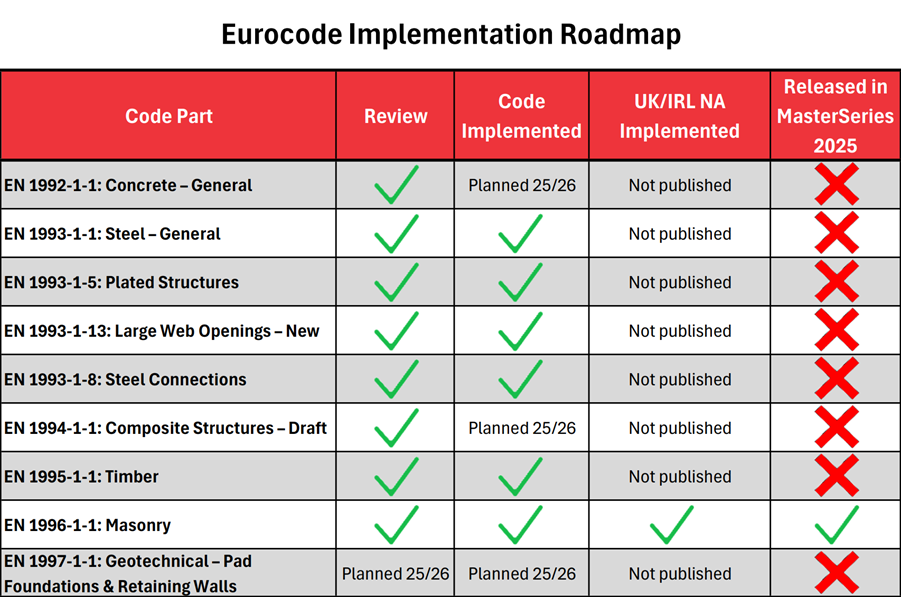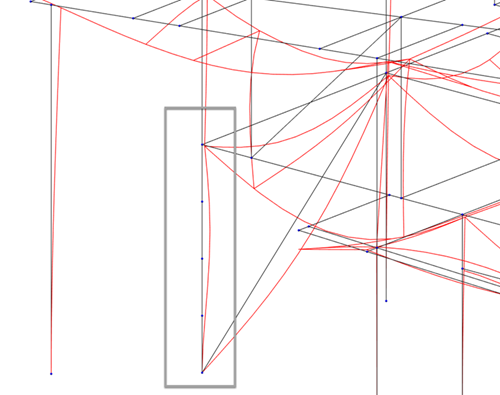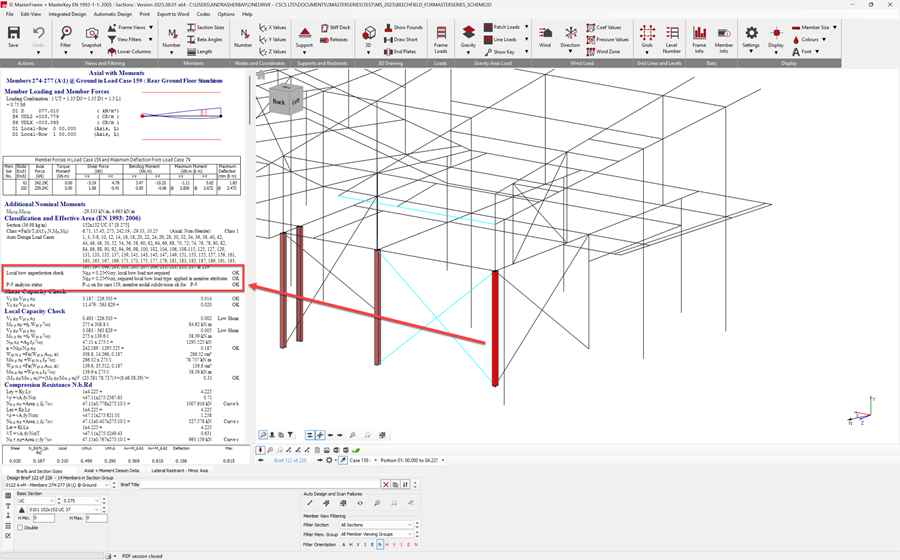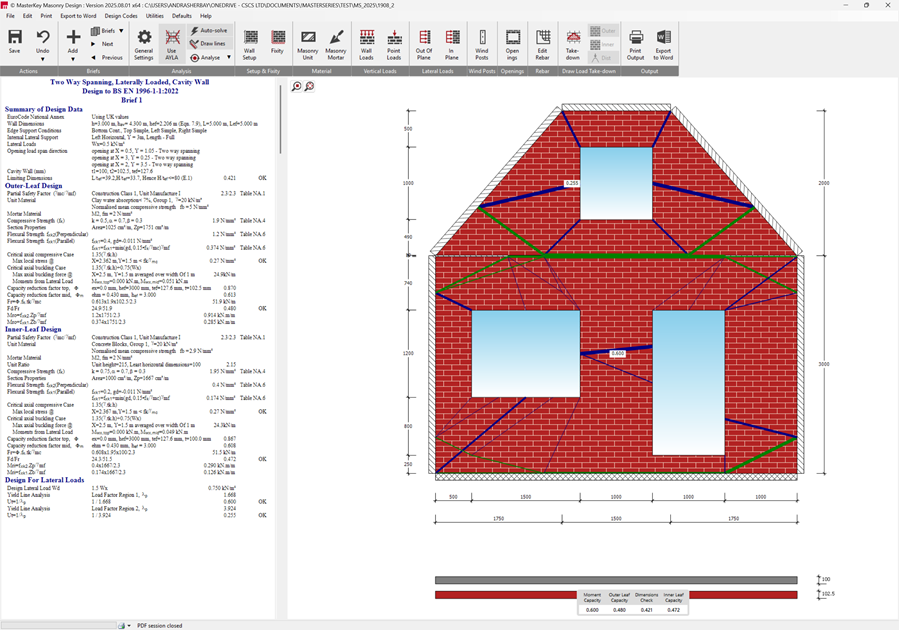MasterSeries Blog
What’s New in MasterSeries 2025
The MasterSeries 2025 release marks a major milestone — with preparation and adoption for the new 2nd Generation Eurocodes, alongside one of the biggest advances yet in our masonry design capabilities.
This version is about more than just new features — it’s about ensuring your design workflow is ready for the future while unlocking faster, more accurate modelling today.

Or log into your account on our website's Client Area to access the installation package. You must have an active MasterSeries subscription or a paid 2025 Maintenance service (for perpetual licences) to run this version.
FEATURE HIGHLIGHTS
#1 2nd Generation Eurocode – Future-Ready
The most significant achievement in MasterSeries 2025 is the implementation and preparation for the 2nd Generation Eurocode (Gen 2).
- Our system architecture is now in an advanced state of preparation for the adoption of Gen 2 Eurocode parts and national annexes as they become available
- The UK National Annex has only been released for EN 1996-1-1: Masonry so far, and this has been fully implemented in MasterSeries 2025
- Once the remaining national annexes are published, we’ll be able to integrate them rapidly — keeping your workflow in step with the latest industry standards
In short, MasterSeries is well underway to being ready for the future of structural design codes.

#2 Improved Sway Stability Assessment
Related products: MasterFrame, MasterPort
Following the recommendations of SCI P399, we further enhanced the empirical Alpha,crit calculation to improve the accuracy of the sway stability assessment.
MasterPort
- α,crit,sm (sway mode) is assessed on notional horizontal forces (HNL) only cases as per P399, 7.5 and following this α,crit,sm = (1/200)*(h/δ). This approach avoids the natural eaves sway of a portal frame under gravity loading incorrectly affecting the empirical α,Crit,sm = (H_ed / V_ed) × (h/δ).
- Where axial force in the rafter is significant (Ned > 0.09Ncr), the α,cr,s,est elastic critical load factor is modified in accordance with P399 7.6.1.
MasterFrame
In MasterFrame, we offer higher control for the user over how to generate notional horizontal forces (HNL) cases and which load cases being used for the α,crit,sm assessment.
- Option in MasterFrame to generate sway stability case using notional horizontal notional forces (HNL) only instead of normal EuroCode Ultimate Cases + HNL.
- Control over the determination of the load case being used for the α,crit assessment. Automatic option would be as per earlier MasterFrame, i.e. in Eurocode, any case that has Ultimate Loads + HNL, and in BS, any case that is HNL only.
#3 Introducing Local Bow Geometric Imperfection
Related products: MasterFrame, MasterKey: Steel Section Design (design add-on)
Local bow imperfection can now be considered in accordance with EN 1993-1-1:2005 5.3.2 (6) & (7). This is member-level small p-delta geometric imperfection considerations. Required for compression members with at least one end moment restrained and when Ned > 0.25Ncr.
The design feature captures local member second-order effects at analysis time, rather than the normal design post-analysis design adjustments
To consider local bow imperfection to a member, a ‘Local Bow’ member attribute must be applied to it. This attribute;
- Generates the local bow imperfection load at analysis time in accordance with EN 1993-1-1:2005 figure 5.4, where Ned> 0.25Ncr. A P-Detla analysis must also be active.
- With “Auto Connect” turned on, it splits the member into appropriate analytical segments to capture the small p-delta effects.

At design time, the integrated steel design checks if the Ned> 0.25Ncr, then if local bow imperfections have been applied, that the member has been appropriately subdivided, and that a P-Delta has been done.
Where all these conditions are met, changes are made to the design approach for combined axial and bending checking, i.e. equation EN 1993-1-1 2005 6.61 is omitted (as per 2022 equation 8.88). 2022 is more explicit on this (7.2.2 (7) b) Method M4), but 2005 alludes to it in 5.2.2. (3) & (7).

#4 Further Steel Design Improvements
Related products: MasterFrame, MasterKey: Steel Section Design (design add-on)
- For asymmetrical I-sections, the lateral torsional buckling (LTB) for the top and bottom flange in compression is considered separately (double curvature bending), and the worst case is chosen (i.e sign of Zj value +ve or -ve).
Previously, this was controlled by the user using the ‘Top Flange in Tension/Compression’ design brief input. - The output clarifies the value of Zj used and the flange compression convention for LTB that is used.
- The output clarifies if Table B.1 or B.2 (susceptible or not for LTB) is used for kzy buckling modification and the condition used for this decision.
- Cross-section classification based on the forces in the portion being designed and not the overall member as it was previously.
#5 Export and Import of FE Surface Loads
Related products: MasterFrame, MasterFrame: Finite Element (analysis add-on)
The new functionalities allow you to export and import finite element surface loads from a text file.
#6 Masonry Design – Full Gable & Multi-Storey Capability
Related products: MasterKey: Masonry Design
One of the biggest leaps forward in MasterSeries 2025 is the ability to design entire walls — including complex gable shapes and multi-storey configurations — as a single unit. Thus resulting in faster modelling, more realistic analysis, and better optimisation.

The 2025 version of the MasterKey: Masonry Design enables the design of both rectangular and non-rectangular complex multi-storey walls (including apex, hipped, and asymmetrical forms) with intermediate supports.
- New gable wall shape – apex, hipped, asymmetrical
- Point loads can be applied at any position in the wall
- New internal lateral line support – useful for multistorey walls
- When internal lateral support is provided, the lateral load takedown along with axial load and buckling checks are performed between each intermediate level
- In ‘General settings’ control over which critical load case (compression, buckling, tension) to show in the load takedown diagrams
- Completely implemented Gen 2 Eurocode with UK NA (BS EN 1996-1-1:2022 + UK NA)
Here’s the complete list of What’s New in MasterSeries 2025.
Categories
- About
- Beam Designer
- BIM
- Composite design
- Concrete Design
- Connections
- Dynamic
- Educational
- General
- LCA
- Masonry
- MasterFrame
- Pile Cap
- Portals
- PowerPad
- Retaining wall
- Steel Design
- Webinar
- Wind Analysis